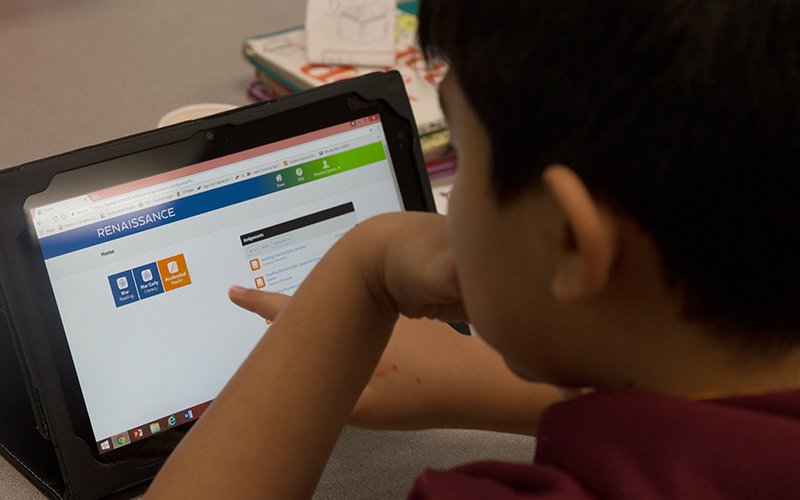
The latest Datos report highlighted a high rate of absenteeism and low graduation rates for Hispanic students. State Superintendent Tom Horne and Valley school districts have differing ideas of how to help. (File photo by Faith Miller/Cronkite News)
PHOENIX – Hispanic students are struggling with high rates of absenteeism and low graduation rates in Arizona, according to the most recent Datos report.
The annual report by the Arizona Hispanic Chamber of Commerce tracks and analyzes the economic impact of the Hispanic community and provides data regarding issues unique to Hispanics throughout Arizona and the United States.
Data from the 2023 Datos report and the Arizona Department of Education, revealed some troubling statistics regarding Hispanic student absenteeism and graduation rates in Arizona.
According to Department of Education data for the 2022-2023 school year, Hispanic students have some of the highest rates of absenteeism among all racial and ethnic groups, with almost 33% of students being classified as “chronically truant,” the second-highest rate behind Native American students at 44.8%. The rate for all students was 28.1%. A student is classified as “chronically truant” when they miss 10% or more of a school’s 180 calendar days, according to the State of Arizona.
Hispanic students were also behind in graduation rates. The four-year graduation rate among Hispanic students in 2023 was 73.5%, the third-lowest among ethnic groups measured. Native Americans had a 65.3% graduation rate, and Black students had a 72% rate.
Richard Franco is the director of marketing and communications at the Phoenix Union High School District. Though he believes that the struggles with absenteeism and low graduation rates are not specific to Hispanic students, he said that Hispanic students do face unique challenges.
“We do know that some challenges that our Hispanic students report are connected to caretaking for younger siblings and the need to earn money to support their family at a younger age,” he said.
One thing that the Phoenix Union district has done to help with the low graduation rates is the launching of the PXU engagement center.
“The engagement center is actively reaching out to students who have recently dropped out of high school with a goal of re-enrolling students into programs that help them finish high school,” Franco said.
Other efforts, starting at the elementary level, have had an effect on absenteeism. The Tempe Elementary School District introduced “text nudges,” which alert parents when their children miss a certain number of days in school. The program also provides data on how a given student matches up with their peers when it comes to attendance.
Arizona Superintendent of Public Instruction Tom Horne acknowledged that Native American students face special challenges with transportation, but said that he sees no such excuse for Hispanic students.
“There is absolutely no reason that Hispanic students can’t be in school just as much as anybody else,” he said.
Horne instead said that the solution to the absenteeism problem lies with an increase in discipline.
“What has to happen is the schools need to crack down as far as discipline goes. If students don’t show up, more than a minimal number of times, they should have to flunk the course and not go to the next grade so that there’s a serious consequence,” he said. “Parents will care, they want their kids to graduate.”
Horne said that he has asked the Arizona Legislature to ensure that teachers are supported by administrators when it comes to discipline. Under current Arizona law, schools are only required to make a “reasonable effort” to contact parents of absent students.
Horne said there is an ongoing problem with teachers not being supported with their disciplinary decisions, and that is one reason teachers are leaving the profession altogether. He said that “we need to bring back traditional discipline” as consequences for student behavior.

